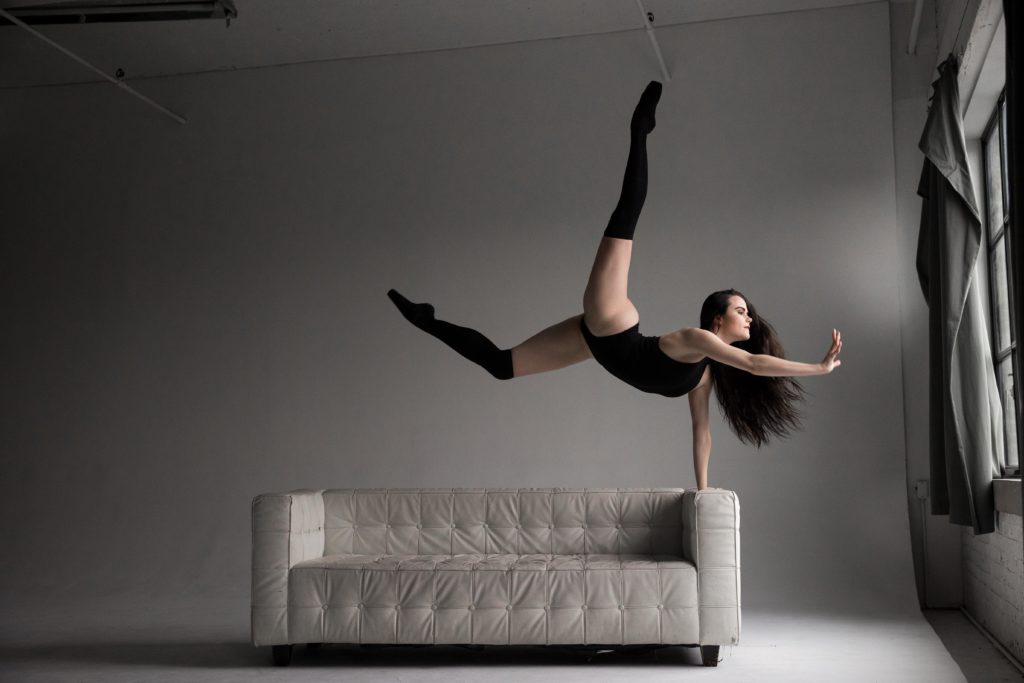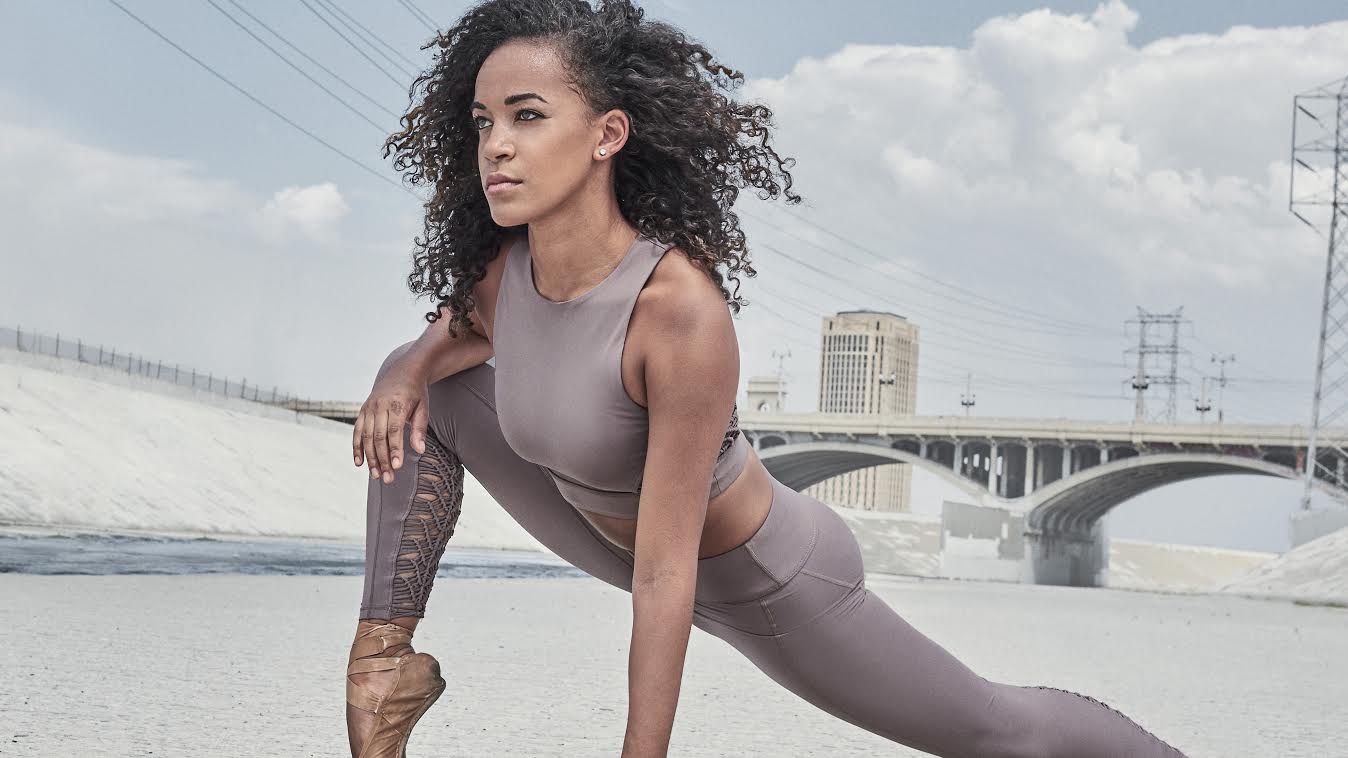Breaking Free: Meet Four Thriving Freelance Ballerinas
Most young ballet dancers assume that company life is the only professional career worth pursuing—but there’s more than one path to success. We got the scoop on indie work from four freelance ballerinas, who shared their journeys to freelancing, their daily must-dos and the rich opportunities of a solo career.
Alison Stroming
At first glance, Alison Stroming’s career started traditionally with companies like Alberta Ballet and Dance Theatre of Harlem. But in reality, she’s been pursuing freelance work for years after signing with Bloc Talent Agency. “I wanted to keep my feet in both worlds,” Stroming says. “My agent would talk to my director and get their approval for me to take different gigs.” After several years of straddling DTH and freelance work, Stroming decided she was ready to step away from a company contract and moved to Los Angeles, where she’s explored opportunities across industries.

Her Freelance CV: Stroming has danced in commercials for American Eagle, McDonald’s and Canon, worked for artists including Kendrick Lamar and Aretha Franklin, and guested with companies and schools like San Jose Dance Theatre in the Bay Area. “I usually do at least two or three Nutcrackers per season,” she says.
Finding Work: Stroming books a lot of work through social media. “I will get messages from casting directors, studio owners and ballet directors who want to work with me,” she says. “But a lot of work in L.A. is about who you know.”
The Day-to-Day: Depending on her schedule, Stroming tries to take dance class at least three times a week. After class she might have multiple auditions, a callback or bookings, or just work from home on her dancewear line, AS Dancewear. “That’s the life of a freelancer,” she says. The rest of her days are typically filled with teaching in Los Angeles, shooting brand deals or traveling to teach at competitions like Icon Dance Awards, NUVO or 24Seven.
Money Moves: “A side hustle is necessary for most freelancers,” Stroming says. “As a dancer, there are so many things you can do to bring in extra income. You can teach or choreograph. Just find something you enjoy!”
The Hard Part: Stroming struggles with the lack of consistency in freelancing. “It can be terrifying,” she says. “It’s not for everyone, and that’s okay because every dancer’s career is different.”
Graceanne Pierce
In June 2020, shortly after Ballet West let her go due to downsizing, Graceanne Pierce moved home to New York City. Despite pandemic restrictions, word got around that she’d returned and projects began popping up. Photographer Rachel Neville asked her to do a commercial short film, she did a Nutcracker pas de deux with friends from American Ballet Theatre, and she landed a Jon Batiste music video. “I went into freelancing with an open mind, and have absolutely loved it,” she says. “I can’t picture my career any other way.”

Her Freelance CV: Since 2021 Pierce has worked with iHeartDance NYC and Dances Patrelle, danced as the Sugar Plum Fairy in a guesting gig with Brooklyn Mack, and frequently performed with Ask la Cour. This year she will perform in the dance film Courage, which depicts the heroines of Jane Austen’s novels—she’ll be portraying Emma.
Finding Work: Most of Pierce’s classical opportunities come via Instagram as well as casting directors reaching out through email.
The Day-to-Day: “I typically start my day with an at-home workout, then take a morning class at Steps on Broadway or Ballet Arts,” she says. “If I’m working on a project, I will go to rehearsal for a few hours, and if I have time I will try to get in another class in the evening.”
Money Moves: So far Pierce hasn’t had many gaps between projects, but she’s still had to strategize to make ends meet. “I have had to learn to be a businesswoman and negotiate contracts, create social media content and manage my opportunities,” she says. Pierce also teaches on Long Island to supplement her income.
The Hard Part: For Pierce, the flexible schedule that comes with freelancing is both a blessing and a challenge. “It’s not like I am getting an email from the company manager telling me my schedule,” she says. “I have to be disciplined and plan ahead to make things happen.”
Silken Kelly
Freelancing was never in Silken Kelly’s career plan. “I was forced into this,” she says. “I didn’t have a choice.” After a disappointing apprentice season at Houston Ballet and a short stint with Dance Theatre of Harlem, Kelly had to adapt. She dipped her toes into the waters of freelancing with some project-based companies in New York. “If you’d asked me then, I would’ve told you I hated it,” she says. “There were many jobs I took just because I needed money.”
Six years later, Kelly boasts a mountain of professional performance credits—and a totally new perspective. “As a freelancer, there is no institution making me question myself or asking me to compromise anything,” she says. “Nobody is commenting on my body. I get to be uniquely me and make the most of it. I am so much more content than I was before.” Her words for those who need more convincing? “Don’t knock it until you try it.”
Her Freelance CV: Kelly tours with companies like Rock the Ballet, guests for schools like Eglevsky Ballet in Bethpage, New York, and has formed her own company. She has modeled for Pottery Barn, Shake Shack and Kiehl’s, and acted in films like Hallmark’s Sugar Plum Twist.
Finding Work: While some of Kelly’s gigs come through word of mouth, a good portion comes from social media. “My strategy has been to collaborate, create art and put it out there in hopes that others will see it and want to work together too,” she says. Though Kelly currently has more than 70 thousand followers on Instagram, she wants dancers to know that it’s not necessary for succeeding as a freelancer. “I have tons of friends who have less than 5 thousand followers on Instagram who work all the time,” she says.

The Day-to-Day: No two days in a freelancer’s life are the same, but there are certain tasks Kelly always makes a priority. “I like to do ballet first thing in the morning at https://www.stepsnyc.comSteps on Broadway,” she says. If she doesn’t have a dance job, she will head home to work on her side gig (running other people’s social media accounts) before going to the gym to cross-train with weights. She also sometimes rents studio space to practice or choreograph and takes acting and singing classes.
Money Moves: “Any freelancer will tell you that when it rains, it pours,” Kelly says. “Sometimes I will go through a drought for a long time, and then suddenly I’m working for a month straight. Thankfully my jobs have paid well enough to get me to the next gig. For security, my social media job also provides some consistent income.”
The Hard Stuff: Despite the perks, freelancing comes with challenges. “In a company, you dance from 10 am to 6 pm, and then you relax,” she says. “As a freelancer, it’s hard to find rest time. I have to constantly be ready in case an email comes in. These people are reaching out to a ton of other dancers, and I need to jump on it to get the gig.”
Kylie Shea
Even while Kylie Shea was thriving in company life, she saw freelancing in her future. “I had too many dreams for that to be the end-all, be-all,” she says. So after she was promoted to principal at Spectrum Dance Theater in Seattle and the demands on her body became too much, “I knew it was time to take whatever cartilage I had left in my hips and go play as a freelancer,” Shea says. “I didn’t have a plan, but when you are open to whatever life has to offer, you will find yourself on a trajectory that’s better than anything you could have imagined.”
Her Freelance CV: Some of her credits include dancing in “It’s Always Sunny in Philadelphia,” “Glee” and Bruno Mars’ “Gorilla” music video.

Finding Work: Shea gets opportunities through her agency, social media and word of mouth. “I’ve made myself both Google-able and easy to get in contact with,” she says. “But, most importantly, I try to demonstrate through my work ethic and how I carry myself that I am someone you can feel comfortable recommending to others.”
The Day-to-Day: Regardless of what’s on her calendar, Shea likes to stay active with an hour and a half to three hours of training each day. “I start with barre and some center,” she says. “Then I put on my pointe shoes and improv for a while before doing some jump rope or cycling.” When she’s not on set or training, she is “always creating,” from teaching and writing to taking and editing photos and videos for social media. “A lot of times, that plan will go out the window if I get a last-minute call from my agent for an audition,” Shea says. “I never know what’s coming next.”
Money Moves: Despite many years as a freelancer, Shea still struggles with the financial aspect of the job. “It is so difficult,” she says. “I’ve always had to do random jobs to supplement,” she says. “Sometimes the money is good—like if you book a national commercial, it will pay enough that you can breathe for a little bit. But most everyone has to do something extra on the side.”
The Hard Part: It can be difficult to let go of beloved short-term opportunities. “After I did ‘It’s Always Sunny in Philadelphia,’ I had severe depression because I knew it would never happen again.” For Shea, unpredictability is the hardest part of freelancing. “When a recent show ended, I didn’t have anything lined up,” she says. “I cried, wondering if I would ever work again. A super-exciting opportunity came up and everything was okay again.”




